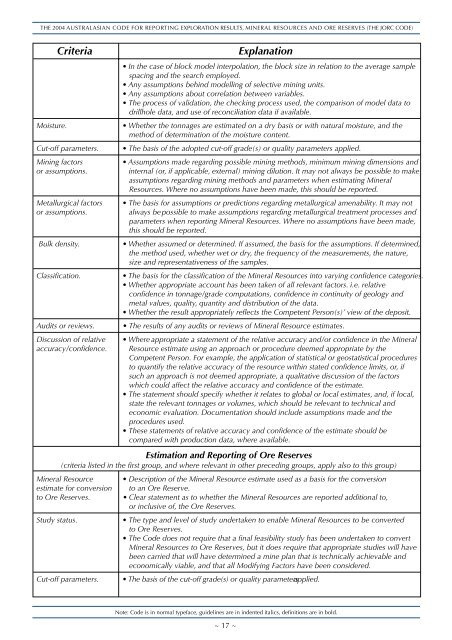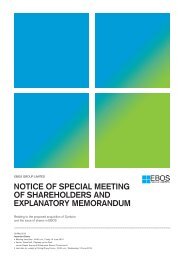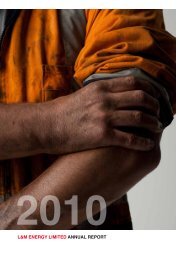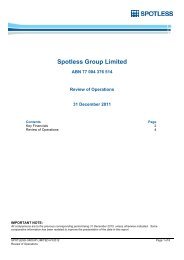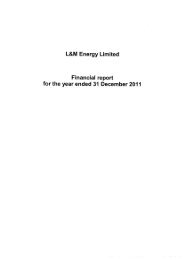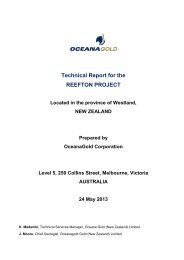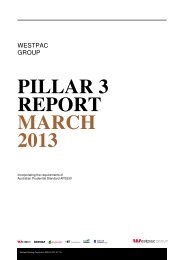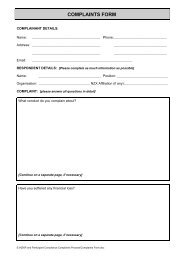NZSX/ NZDX Listing Rules APPENDIX 1 Part A (Rules 10.4.2 ... - NZX
NZSX/ NZDX Listing Rules APPENDIX 1 Part A (Rules 10.4.2 ... - NZX
NZSX/ NZDX Listing Rules APPENDIX 1 Part A (Rules 10.4.2 ... - NZX
You also want an ePaper? Increase the reach of your titles
YUMPU automatically turns print PDFs into web optimized ePapers that Google loves.
THE 2004 AUSTRALASIAN CODE FOR REPORTING EXPLORATION RESULTS, MINERAL RESOURCES AND ORE RESERVES (THE JORC CODE)<br />
Moisture.<br />
Criteria<br />
Cut-off parameters.<br />
Mining factors<br />
or assumptions.<br />
Metallurgical factors<br />
or assumptions.<br />
Bulk density.<br />
Classification.<br />
Audits or reviews.<br />
Discussion of relative<br />
accuracy/confidence.<br />
Explanation<br />
• In the case of block model interpolation, the block size in relation to the average sample<br />
spacing and the search employed.<br />
• Any assumptions behind modelling of selective mining units.<br />
• Any assumptions about correlation between variables.<br />
• The process of validation, the checking process used, the comparison of model data to<br />
drillhole data, and use of reconciliation data if available.<br />
• Whether the tonnages are estimated on a dry basis or with natural moisture, and the<br />
method of determination of the moisture content.<br />
• The basis of the adopted cut-off grade(s) or quality parameters applied.<br />
• Assumptions made regarding possible mining methods, minimum mining dimensions and<br />
internal (or, if applicable, external) mining dilution. It may not always be possible to make<br />
assumptions regarding mining methods and parameters when estimating Mineral<br />
Resources. Where no assumptions have been made, this should be reported.<br />
• The basis for assumptions or predictions regarding metallurgical amenability. It may not<br />
always be possible to make assumptions regarding metallurgical treatment processes and<br />
parameters when reporting Mineral Resources. Where no assumptions have been made,<br />
this should be reported.<br />
• Whether assumed or determined. If assumed, the basis for the assumptions. If determined,<br />
the method used, whether wet or dry, the frequency of the measurements, the nature,<br />
size and representativeness of the samples.<br />
• The basis for the classification of the Mineral Resources into varying confidence categories.<br />
• Whether appropriate account has been taken of all relevant factors. i.e. relative<br />
confidence in tonnage/grade computations, confidence in continuity of geology and<br />
metal values, quality, quantity and distribution of the data.<br />
• Whether the result appropriately reflects the Competent Person(s)’ view of the deposit.<br />
• The results of any audits or reviews of Mineral Resource estimates.<br />
• Where appropriate a statement of the relative accuracy and/or confidence in the Mineral<br />
Resource estimate using an approach or procedure deemed appropriate by the<br />
Competent Person. For example, the application of statistical or geostatistical procedures<br />
to quantify the relative accuracy of the resource within stated confidence limits, or, if<br />
such an approach is not deemed appropriate, a qualitative discussion of the factors<br />
which could affect the relative accuracy and confidence of the estimate.<br />
• The statement should specify whether it relates to global or local estimates, and, if local,<br />
state the relevant tonnages or volumes, which should be relevant to technical and<br />
economic evaluation. Documentation should include assumptions made and the<br />
procedures used.<br />
• These statements of relative accuracy and confidence of the estimate should be<br />
compared with production data, where available.<br />
Estimation and Reporting of Ore Reserves<br />
(criteria listed in the first group, and where relevant in other preceding groups, apply also to this group)<br />
Mineral Resource<br />
estimate for conversion<br />
to Ore Reserves.<br />
Study status.<br />
Cut-off parameters.<br />
• Description of the Mineral Resource estimate used as a basis for the conversion<br />
to an Ore Reserve.<br />
• Clear statement as to whether the Mineral Resources are reported additional to,<br />
or inclusive of, the Ore Reserves.<br />
• The type and level of study undertaken to enable Mineral Resources to be converted<br />
to Ore Reserves.<br />
• The Code does not require that a final feasibility study has been undertaken to convert<br />
Mineral Resources to Ore Reserves, but it does require that appropriate studies will have<br />
been carried that will have determined a mine plan that is technically achievable and<br />
economically viable, and that all Modifying Factors have been considered.<br />
• The basis of the cut-off grade(s) or quality parameters applied.<br />
Note: Code is in normal typeface, guidelines are in indented italics, definitions are in bold.<br />
~ 17 ~


